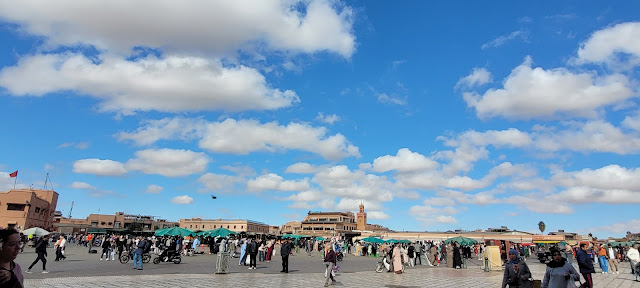MAZIGH MUSIC AS SPIRITUAL HEALING — BETWEEN RITUALS AND SYMBOLS
WEEKLY SERIES | WEEK 5 | WITH MOROCCO AMBIENCE TOURS:
Where sound becomes a sacred code for healing, memory, and collective soul-building.
At the heart of Amazigh tradition lies Ahidous, a ritual of movement, voice, and memory that emerges from the Middle Atlas Mountains. It is more than a dance—it is a circle of collective purification and spiritual synchronization. Performed primarily by the Zayan, Ait Skhman, and Ait Youssi tribes, Ahidous is a rhythmic communion where men and women form a unified line or circle, chanting in harmony while stepping to a shared heartbeat. The sound of the bendir drum guides the participants through a trance-like state, cleansing both the individual and the group. Here, poetry becomes a prayer, and rhythm a pathway to harmony.
In villages tucked within the Atlas Mountains and the desert edges of Morocco, Amazigh music is not mere entertainment. It is a sacred act—a healing ritual and a symbolic language linking people with nature, history, and the cosmos.
Amazigh musical traditions are characterized by layered symbolism, experienced not only through the ears but felt in the body and spirit. Rhythm is not just time—it is a cosmic pulse that restores emotional balance. The voice, whether in chant or in playing instruments like the rqq (frame drum), naqous (bells), or loutar (lute), carries sonic codes believed to cleanse the soul and open inner portals of awareness.
In collective performances like Ahwash, Ahellil, and Tassawt, music expresses belonging, myth, and the spiritual memory of a people. In Zawiya and Gnawa healing rituals, music enters a therapeutic cycle—through ascending rhythms and repeated melodic phrases, it leads participants into spiritual states such as wajd or ghayba (ecstasy or trance), akin to meditation.
Amazigh music treats pain not as an enemy but as a transformable energy—one dismantled through sound, motion, and community. It heals, unites, and preserves. Memory here is not only narrated but encoded in rhythm and vibration, echoing through mountain ranges and human consciousness.
In the Amazigh worldview, music is nature—not an artifice, but a mirror of cosmic order. A note on the loutar, a whisper in Ahellil, a beat of the bendir: these are earth's voice. Rituals often begin with invocations, as song transcends the physical into the sacred, reminding us of music’s roots in the unseen.
In the Middle Atlas, Ahidous is a living expression of balance, dignity, and collective spirit. The circular or linear formation of singers and dancers symbolizes the circle of life and harmony. It is not a performance—it is ritualized unity, where the body is an instrument, the voice a conduit, and the rhythm a cleanser.
Ahidous songs blend love, wisdom, satire, and resistance, transmitted across generations. These chants, steeped in metaphor, keep the ancestral voice alive and current.
In the Souss and Drâa valleys, Ahwash blends poetry, percussion, and spiritual power. At night, in village squares lit by moonlight or fire, men and women chant and dance in a rhythmic ritual that binds the community and awakens ancestral memory.
Ahellil, most known among the Tuareg and Saharan Amazigh in places like Timid or Foum Zguid, is a meditative, often melancholic ritual performed under the stars. The poetic recitations speak of exile, longing, love, and belonging, echoing collective resilience.
Beyond communal ceremonies, specific traditions like those of the Gnawa, Sidi Bilal, Aissawa, and Hammada involve spiritual music for healing. Instruments such as the guembri, metal castanets (krakebs), and sacred chants generate vibratory frequencies to expel negative energy, treat trauma, and reconnect soul and body.
These rituals are not theatrical—they are forms of ancestral medicine, where melody is medicine and every sound aligns with spiritual centers in the human body. Each color, rhythm, and verse carries symbolic intent and therapeutic depth.
Amazigh music is a sonic archive. It carries oral history, recounts battles and migrations, celebrates seasons, and encodes philosophy in poetic form. It is the heartbeat of Amazigh identity, passed through songs sung by mothers, chants during harvest, and rituals in solitude and festivity.
Amazigh music traces back to prehistoric North Africa, when rhythm was central to ritual and community. Archaeological findings—such as rock carvings of musical scenes and ancient flutes—suggest music was an early tool of spiritual alignment (Reynolds, 2017; Abu-Lughod, 1986).
Over the centuries, it evolved while maintaining its core: music as spiritual technology and social memory. From sacred chants in mountain villages to trance-inducing melodies of Gnawa brotherhoods, Amazigh music continues to be a vibrant symbol of resistance, harmony, and identity (Schuyler, 2001; Silverstein, 2004).
• Reynolds, T. (2017). The Sound of the Ancients: Music and Ritual in North African Prehistory. Journal of Ethnomusicology, 61(2), 145-167.
• Abu-Lughod, J. (1986). Veiled Sentiments: Honor and Poetry in a Bedouin Society. University of California Press.
• Schuyler, P. (2001). Amazigh Identity and Music in North Africa. The Journal of African Cultural Studies, 14(1), 21–33.
• Silverstein, P. A. (2004). Music and Memory in the Maghreb. In The Garland Encyclopedia of World Music (Vol. 6: Africa). Routledge.
.png)



Comments
Post a Comment